
The quest for the Shad
Discover the Shad, our national Tarpon. Explore the characteristics of this iconic fish, its habitats, fishing techniques and tips for successful targeting.
[caption id="" align="alignnone" width="580"] Here's a photo by Ju Lien that really shows off this fabulous fish. Not being able to take such beautiful shots, he allowed me to borrow it, and I recommend you take a look at his website: https://www.julienpouille.com The Shad in the photo was caught on a fly by fishing guide Jean-Baptiste Vidal, whom I had the pleasure of meeting on the water's edge. I recommend him to anyone wanting to discover migratory fly fishing[/caption].
As the fishing season draws to a close here and there, here's a new article devoted to the fish I've been looking for this year: the large shad (alosa alosa)! It's a fascinating fish, little known and classified as vulnerable in France. The Shad is crazy addictive from the very first encounter! That's why I'd like to tell you a bit more about this fish in this article, first by summarizing what I've read about it in the scientific articles available on the Internet, and then by telling you about my first lure fishing experiences with this species. However, I don't claim to know this fish well enough to tell you what to do. I'm simply going to share with you what I've seen on the water and I'd be delighted if you'd comment on this article to add to it, tell me where I'm wrong or simply if you agree ... ;)
Big Shad, let's talk about it :)
This fish belongs to the clupeid family, i.e. to the herring, sardine or tarpon family. As a result, it has a laterally compressed spindle-shaped body and a strongly curved dorsal profile. The head is broad and flattened, with a high but narrow triangular mouth, cartilaginous and devoid of visible teeth.
Shad generally have a single large spot on the back of the head (towards the top of the operculum), but this may be followed by one or more smaller spots. The back is dark, tending towards deep blue or even black/grey with magnificent purplish highlights. The belly and sides are silvery-white.
This fish has no lateral line! The scales are rounded and rather large, untidy and don't hold the fish very well (you have to be careful with the quality of the net if you don't want to scale it...). Another important point is that this fish has a lot of mucus: it slobbers everywhere, sticks to your clothes and slides around like a bar of soap... You have to be really careful not to drop it... As for the fins, the dorsal fin is not very wide (4-5cm) and located in the middle of the back. The caudal fin is large, notched and very forked (you can hold it fairly well by the tail out of the water).
Last but not least for the angler, let's talk about its measurements. The average size of large Shad in French rivers is around 52cm, weighing in at around 1.5kg. However, in Portugal and Morocco, some specimens reach 80cm for 5kg. Personally, the ones I caught in Brittany measured between 55 and 65cm. And there's no difference in size between males and females.
[caption id="" align="alignnone" width="580"]
Here's a photo by Ju Lien that really shows off this fabulous fish. Not being able to take such beautiful shots, he allowed me to borrow it, and I recommend you take a look at his website: https://www.julienpouille.com The Shad in the photo was caught on a fly by fishing guide Jean-Baptiste Vidal, whom I had the pleasure of meeting on the water's edge. I recommend him to anyone wanting to discover migratory fly fishing[/caption].
As the fishing season draws to a close here and there, here's a new article devoted to the fish I've been looking for this year: the large shad (alosa alosa)! It's a fascinating fish, little known and classified as vulnerable in France. The Shad is crazy addictive from the very first encounter! That's why I'd like to tell you a bit more about this fish in this article, first by summarizing what I've read about it in the scientific articles available on the Internet, and then by telling you about my first lure fishing experiences with this species. However, I don't claim to know this fish well enough to tell you what to do. I'm simply going to share with you what I've seen on the water and I'd be delighted if you'd comment on this article to add to it, tell me where I'm wrong or simply if you agree ... ;)
Big Shad, let's talk about it :)
This fish belongs to the clupeid family, i.e. to the herring, sardine or tarpon family. As a result, it has a laterally compressed spindle-shaped body and a strongly curved dorsal profile. The head is broad and flattened, with a high but narrow triangular mouth, cartilaginous and devoid of visible teeth.
Shad generally have a single large spot on the back of the head (towards the top of the operculum), but this may be followed by one or more smaller spots. The back is dark, tending towards deep blue or even black/grey with magnificent purplish highlights. The belly and sides are silvery-white.
This fish has no lateral line! The scales are rounded and rather large, untidy and don't hold the fish very well (you have to be careful with the quality of the net if you don't want to scale it...). Another important point is that this fish has a lot of mucus: it slobbers everywhere, sticks to your clothes and slides around like a bar of soap... You have to be really careful not to drop it... As for the fins, the dorsal fin is not very wide (4-5cm) and located in the middle of the back. The caudal fin is large, notched and very forked (you can hold it fairly well by the tail out of the water).
Last but not least for the angler, let's talk about its measurements. The average size of large Shad in French rivers is around 52cm, weighing in at around 1.5kg. However, in Portugal and Morocco, some specimens reach 80cm for 5kg. Personally, the ones I caught in Brittany measured between 55 and 65cm. And there's no difference in size between males and females.
[caption id="" align="alignnone" width="580"] Here's a large Shad with its pretty reflections[/caption]
Shad can be confused with the Feint Shad. Also a migratory species, it is distinguished by its smaller size, less narrow and less compressed head, the existence of 4 to 8 small, well-marked black spots behind the operculum and more regular scaling. However, the genetic differences between the two species are small, allowing for hybridization.
From a biological point of view, the large Shad is an anadromous migratory species (i.e. it lives at sea and returns to the river to spawn). Adults return to the rivers where they were born, generally from February to June, and stop feeding during the migration. Migration and spawning are highly conditioned by water temperature: no migration for waters below 10°C and preferential reproduction for waters between 16 and 20°C.
Breeding takes place mainly at night, but also in the evening. They are visible on the surface and audible thanks to their "bull" parade, a sort of noisy dance in which the Shads describe circles on the surface. It's a truly impressive sight! The spawners generally die after spawning.
The eggs will hatch a good week after laying (May to mid-August), but the water temperature must be above 17°C. After 15-20 days, the Shads, which measure over 20cm, will actively move along the bottom in the company of bleak. Their migration to the sea begins in late summer through to autumn, and the majority will have reached the sea before winter with a size of 5 to 10cm.
During their 3 to 7 years of growth at sea (with females reaching sexual maturity later), Shad will remain on the continental shelf and school at depths of 70 to 300 meters, feeding on zooplankton and the larger individuals on fish as well.
How I managed to catch some :)
Now that we've talked a little about fish, I'll tell you about my first (more or less chaotic ^^') approaches and my first findings :) To begin with, I'd like to point out that I've fished mainly the Aulne (15 to 30m wide), so what I'm about to say may not correspond to fishing on other rivers.
As a result, I'd like to cover several points: how to find the position of the Shads and tackle them, the lures that have made sense to me and finally the type of rod suitable (or not).
[caption id="" align="alignnone" width="580"]
Here's a large Shad with its pretty reflections[/caption]
Shad can be confused with the Feint Shad. Also a migratory species, it is distinguished by its smaller size, less narrow and less compressed head, the existence of 4 to 8 small, well-marked black spots behind the operculum and more regular scaling. However, the genetic differences between the two species are small, allowing for hybridization.
From a biological point of view, the large Shad is an anadromous migratory species (i.e. it lives at sea and returns to the river to spawn). Adults return to the rivers where they were born, generally from February to June, and stop feeding during the migration. Migration and spawning are highly conditioned by water temperature: no migration for waters below 10°C and preferential reproduction for waters between 16 and 20°C.
Breeding takes place mainly at night, but also in the evening. They are visible on the surface and audible thanks to their "bull" parade, a sort of noisy dance in which the Shads describe circles on the surface. It's a truly impressive sight! The spawners generally die after spawning.
The eggs will hatch a good week after laying (May to mid-August), but the water temperature must be above 17°C. After 15-20 days, the Shads, which measure over 20cm, will actively move along the bottom in the company of bleak. Their migration to the sea begins in late summer through to autumn, and the majority will have reached the sea before winter with a size of 5 to 10cm.
During their 3 to 7 years of growth at sea (with females reaching sexual maturity later), Shad will remain on the continental shelf and school at depths of 70 to 300 meters, feeding on zooplankton and the larger individuals on fish as well.
How I managed to catch some :)
Now that we've talked a little about fish, I'll tell you about my first (more or less chaotic ^^') approaches and my first findings :) To begin with, I'd like to point out that I've fished mainly the Aulne (15 to 30m wide), so what I'm about to say may not correspond to fishing on other rivers.
As a result, I'd like to cover several points: how to find the position of the Shads and tackle them, the lures that have made sense to me and finally the type of rod suitable (or not).
[caption id="" align="alignnone" width="580"] A beautiful Shad caught on a good evening :) Thanks to the guards for the photo![/caption]
To start with, when you get to the area where the shad are supposed to be, you need to find the spot to fish. To do this, you need to observe the surface of the water and, if they are present and active, there will be phases when they will show themselves on the surface by "porpoising". This helps to determine the fishing area. Generally speaking, I've found that dawn and dusk are the best times to fish for them. At these times, they were mainly stationed in strong, shallow currents. Later in the day, they move back down into the pools, where they are harder to find. Phases of activity are often accompanied by close bites and sometimes last 15 minutes or so, but I've also noticed constant peaks of activity lasting 2-3 hours.
Once you've found the area you want to fish, you need to present them with the right lure at the right depth. To do this, I've acquired 2 reflexes following numerous mistakes and a few successes: if the water is tense and murky, I choose a 2" lure or slightly larger, and if the water has a reasonable flow and is clear, I choose even smaller lures: 1" or less, but in both cases, the colors must be bright: white, orange, chartreuse yellow or pink. As for the type of lure, I like to use a lure that swims "on its own", such as a shad or comma. They don't necessarily have to give off big vibrations, as far as I've noticed. Color, size and presentation really seem to be the determining parameters. Finally, to find the right depth, I use TP with a really strong hook ranging from 1.5 to 2.7 grams. Once you're used to the spot, you'll quickly find the right TP, but it's still quite simple: during a period of activity, once the lure has been correctly chosen, the right fishing depth will be "easy" to find as the bites will follow one another 8-)
The revelation of my season: the Angry Spin by Crazy Fish
As I just said I had a preference for small shads and commas which brought me the greatest consistency in results. I fished with shad classics such as Ecogear's Grassminnow and Paramax, Crazy Fish's One' up Shad 2", Nano Minnow and Vibro 2". I caught fish with all these lures, but on all my outings, if there's ONE lure that stood out, it's Crazy Fish's Angry Spin in 1".
As for the colors in the range ... I've already told you quite a lot and I'd like to keep a bit of a secret, but what I can tell you is that the UV colors undeniably bring good results on Shad!
[caption id="" align="alignnone" width="580"]
A beautiful Shad caught on a good evening :) Thanks to the guards for the photo![/caption]
To start with, when you get to the area where the shad are supposed to be, you need to find the spot to fish. To do this, you need to observe the surface of the water and, if they are present and active, there will be phases when they will show themselves on the surface by "porpoising". This helps to determine the fishing area. Generally speaking, I've found that dawn and dusk are the best times to fish for them. At these times, they were mainly stationed in strong, shallow currents. Later in the day, they move back down into the pools, where they are harder to find. Phases of activity are often accompanied by close bites and sometimes last 15 minutes or so, but I've also noticed constant peaks of activity lasting 2-3 hours.
Once you've found the area you want to fish, you need to present them with the right lure at the right depth. To do this, I've acquired 2 reflexes following numerous mistakes and a few successes: if the water is tense and murky, I choose a 2" lure or slightly larger, and if the water has a reasonable flow and is clear, I choose even smaller lures: 1" or less, but in both cases, the colors must be bright: white, orange, chartreuse yellow or pink. As for the type of lure, I like to use a lure that swims "on its own", such as a shad or comma. They don't necessarily have to give off big vibrations, as far as I've noticed. Color, size and presentation really seem to be the determining parameters. Finally, to find the right depth, I use TP with a really strong hook ranging from 1.5 to 2.7 grams. Once you're used to the spot, you'll quickly find the right TP, but it's still quite simple: during a period of activity, once the lure has been correctly chosen, the right fishing depth will be "easy" to find as the bites will follow one another 8-)
The revelation of my season: the Angry Spin by Crazy Fish
As I just said I had a preference for small shads and commas which brought me the greatest consistency in results. I fished with shad classics such as Ecogear's Grassminnow and Paramax, Crazy Fish's One' up Shad 2", Nano Minnow and Vibro 2". I caught fish with all these lures, but on all my outings, if there's ONE lure that stood out, it's Crazy Fish's Angry Spin in 1".
As for the colors in the range ... I've already told you quite a lot and I'd like to keep a bit of a secret, but what I can tell you is that the UV colors undeniably bring good results on Shad!
[caption id="" align="alignnone" width="580"] One of the many shad caught on THE lure of my season: the angry spin 1[/caption]
Adapted equipment: rod, reel and line.
Finally, I'd like to talk about the right tackle for this fish! A Shad is a fish that can be fished with very small lures that must weigh in at around three grams, even though they are 50-60 cm long and have a hell of a catch (nothing to envy a migrating salmonid!) with a mouth that is very difficult to hook! Fights are generally punctuated by big rushes against the current and some very nice candles, and with their cartilaginous mouth, the slightest false step or slackness in the rod is enough to lose the fish (and believe me, I hit 4-5 fish before pulling out my first Shad! The reason: an unsuitable rod...) ...
So, like many people, I tried to fish with my own Trout rod: an NFC FW662-2 IM fitted with RodHouse. It's really a Trout-type rod and therefore not really suited to Shad for my taste: too soft for effective casting, not fast enough in a fight and with a lack of power reserve ... I still managed to get out some nice ones and it was fun, but the fights remained long and for this fragile fish, that's not ideal ...
[caption id="" align="alignnone" width="580"]
One of the many shad caught on THE lure of my season: the angry spin 1[/caption]
Adapted equipment: rod, reel and line.
Finally, I'd like to talk about the right tackle for this fish! A Shad is a fish that can be fished with very small lures that must weigh in at around three grams, even though they are 50-60 cm long and have a hell of a catch (nothing to envy a migrating salmonid!) with a mouth that is very difficult to hook! Fights are generally punctuated by big rushes against the current and some very nice candles, and with their cartilaginous mouth, the slightest false step or slackness in the rod is enough to lose the fish (and believe me, I hit 4-5 fish before pulling out my first Shad! The reason: an unsuitable rod...) ...
So, like many people, I tried to fish with my own Trout rod: an NFC FW662-2 IM fitted with RodHouse. It's really a Trout-type rod and therefore not really suited to Shad for my taste: too soft for effective casting, not fast enough in a fight and with a lack of power reserve ... I still managed to get out some nice ones and it was fun, but the fights remained long and for this fragile fish, that's not ideal ...
[caption id="" align="alignnone" width="580"] The fabulous action of the FW662-2 IM on a beautiful shad! A fun blank but not suitable for No-Kill shad fishing[/caption].
So I quickly switched to another blank: the Phenix K2 TX763-ML-S. This blank is also fitted with RodHouse and is much more in the running: a blank I've fitted for 7'6 Sea bass casting both 3.5 and 18 grams thanks to a very supple tip, great sensitivity and ease of striking thanks to the HM carbon which is stiffer than IM. On the other hand, this blank is slightly lacking in progressiveness and is a little too powerful for my taste ...
[caption id="" align="alignnone" width="580"]
The fabulous action of the FW662-2 IM on a beautiful shad! A fun blank but not suitable for No-Kill shad fishing[/caption].
So I quickly switched to another blank: the Phenix K2 TX763-ML-S. This blank is also fitted with RodHouse and is much more in the running: a blank I've fitted for 7'6 Sea bass casting both 3.5 and 18 grams thanks to a very supple tip, great sensitivity and ease of striking thanks to the HM carbon which is stiffer than IM. On the other hand, this blank is slightly lacking in progressiveness and is a little too powerful for my taste ...
[caption id="" align="alignnone" width="580"] The Phenix K2 ML S series: a very good blank which is really better suited to this type of fishing! All the more so as it will allow you to fish for Sea bass and sea bass with light lures ;)[/caption]
So, I think the ideal blank for this fish should be progressive with a good reserve of power but not too much either. It should be easy to use with soft lures and stiff enough on the strike to pierce the cartilaginous mouth of the Shad. However, it also needs to be able to throw 3.5 gram combos (so a good length is better) ... and I think I've found one or two that would totally fit the bill! I'll test it next year :)
As for the reels, I used a size 2000: the Daiwa Certate 2004CH that I use for Trout. It was very good: the right size, a very progressive drag: I can only recommend it to people who want a light but strong reel to go from sea to freshwater ;) However, for the line, I strongly recommend using 6 or 8/100 fine braid with a 21/100 fluorocarbon leader. I haven't had a single breakage on this set and it's much more comfortable than nylon (by the time you feel the touch and strike, the fish has already let go of the lure...).
At a glance
Shad is a fantastic fish and I'm looking forward to next season! It deserves the utmost respect if we are to continue fishing it in this way. Taking care of the fish: a good landing net with rubber mesh, leaving it out of the water for a short time and suitable equipment are necessary to give it a fighting chance!
A fishing style open to all, which can be mastered fairly quickly, and which can catch a dozen fish in a very short time :) I met a lot of people on the water and had a great time, especially with Alex who was with me most of the time. There were some tougher outings too ... with only a few stalls or not even a touch ... you've got to keep hope alive and persevere, you'll end up with some good memories to tell ;)
Sources
All the information on this fish I've given in this article comes from specialized articles and websites. I like to do this kind of research to better understand the fish and better succeed in fishing it. In my opinion, it helps you progress much faster! So I'm posting the main links I've used if you'd like more information ;)
However, books aren't everything ^^' and I've been lucky enough to meet some great people out on the water who've taken the time to share bits and pieces of their experience about this fish and that's part of the reason I've managed to improve my fishing results and for all that, thank you! Thanks also to my buddy Alex, with whom we did some of the outings together and who helped me keep my hopes up ^^.
[caption id="" align="alignnone" width="580"]
The Phenix K2 ML S series: a very good blank which is really better suited to this type of fishing! All the more so as it will allow you to fish for Sea bass and sea bass with light lures ;)[/caption]
So, I think the ideal blank for this fish should be progressive with a good reserve of power but not too much either. It should be easy to use with soft lures and stiff enough on the strike to pierce the cartilaginous mouth of the Shad. However, it also needs to be able to throw 3.5 gram combos (so a good length is better) ... and I think I've found one or two that would totally fit the bill! I'll test it next year :)
As for the reels, I used a size 2000: the Daiwa Certate 2004CH that I use for Trout. It was very good: the right size, a very progressive drag: I can only recommend it to people who want a light but strong reel to go from sea to freshwater ;) However, for the line, I strongly recommend using 6 or 8/100 fine braid with a 21/100 fluorocarbon leader. I haven't had a single breakage on this set and it's much more comfortable than nylon (by the time you feel the touch and strike, the fish has already let go of the lure...).
At a glance
Shad is a fantastic fish and I'm looking forward to next season! It deserves the utmost respect if we are to continue fishing it in this way. Taking care of the fish: a good landing net with rubber mesh, leaving it out of the water for a short time and suitable equipment are necessary to give it a fighting chance!
A fishing style open to all, which can be mastered fairly quickly, and which can catch a dozen fish in a very short time :) I met a lot of people on the water and had a great time, especially with Alex who was with me most of the time. There were some tougher outings too ... with only a few stalls or not even a touch ... you've got to keep hope alive and persevere, you'll end up with some good memories to tell ;)
Sources
All the information on this fish I've given in this article comes from specialized articles and websites. I like to do this kind of research to better understand the fish and better succeed in fishing it. In my opinion, it helps you progress much faster! So I'm posting the main links I've used if you'd like more information ;)
However, books aren't everything ^^' and I've been lucky enough to meet some great people out on the water who've taken the time to share bits and pieces of their experience about this fish and that's part of the reason I've managed to improve my fishing results and for all that, thank you! Thanks also to my buddy Alex, with whom we did some of the outings together and who helped me keep my hopes up ^^.
[caption id="" align="alignnone" width="580"] Alex and his pretty shad on our first attempt of the year[/caption]
1) Here's a link to the INPN website, which is very comprehensive and provides numerous links. In particular, you'll find all the taxonomy and data on the geographical distribution of our territory: https://inpn.mnhn.fr/espece/cd_nom/66967
2) ONEMA information sheet on protected aquatic species: https://inpn.mnhn.fr/fichesEspece/Alosa%20alosa-66967_avril2013.pdf
3) Data on the Grande alose de l'Aulne and its habits collected by INRA and the University of Rennes between 1998 and 2002: https://www.sage-aulne.fr/index.php?option=com_content&view=article&id=148:la-grande-alose-alosa&catid=86&Itemid=254, la plaquette de l'alose en Bretagne: https://sage-aulne.fr/index.php?option=com_jdownloads&Itemid=142&view=finish&cid=49&catid=10 and the full report: https://sage-aulne.fr/index.php?option=com_jdownloads&Itemid=142&view=finish&cid=48&catid=10
4) Fachbericht 28 Umschlag F.indd, The reintroduction of large shad (Shad alosa) into the Rhine system: https://ec.europa.eu/environment/life/project/Projects/index.cfm?fuseaction=home.showFile&rep=file&fil=LIFE06_NAT_D_000005_LAYMAN_EN.pdf
Louis Leveuf
Alex and his pretty shad on our first attempt of the year[/caption]
1) Here's a link to the INPN website, which is very comprehensive and provides numerous links. In particular, you'll find all the taxonomy and data on the geographical distribution of our territory: https://inpn.mnhn.fr/espece/cd_nom/66967
2) ONEMA information sheet on protected aquatic species: https://inpn.mnhn.fr/fichesEspece/Alosa%20alosa-66967_avril2013.pdf
3) Data on the Grande alose de l'Aulne and its habits collected by INRA and the University of Rennes between 1998 and 2002: https://www.sage-aulne.fr/index.php?option=com_content&view=article&id=148:la-grande-alose-alosa&catid=86&Itemid=254, la plaquette de l'alose en Bretagne: https://sage-aulne.fr/index.php?option=com_jdownloads&Itemid=142&view=finish&cid=49&catid=10 and the full report: https://sage-aulne.fr/index.php?option=com_jdownloads&Itemid=142&view=finish&cid=48&catid=10
4) Fachbericht 28 Umschlag F.indd, The reintroduction of large shad (Shad alosa) into the Rhine system: https://ec.europa.eu/environment/life/project/Projects/index.cfm?fuseaction=home.showFile&rep=file&fil=LIFE06_NAT_D_000005_LAYMAN_EN.pdf
Louis Leveuf
 Here's a photo by Ju Lien that really shows off this fabulous fish. Not being able to take such beautiful shots, he allowed me to borrow it, and I recommend you take a look at his website: https://www.julienpouille.com The Shad in the photo was caught on a fly by fishing guide Jean-Baptiste Vidal, whom I had the pleasure of meeting on the water's edge. I recommend him to anyone wanting to discover migratory fly fishing[/caption].
As the fishing season draws to a close here and there, here's a new article devoted to the fish I've been looking for this year: the large shad (alosa alosa)! It's a fascinating fish, little known and classified as vulnerable in France. The Shad is crazy addictive from the very first encounter! That's why I'd like to tell you a bit more about this fish in this article, first by summarizing what I've read about it in the scientific articles available on the Internet, and then by telling you about my first lure fishing experiences with this species. However, I don't claim to know this fish well enough to tell you what to do. I'm simply going to share with you what I've seen on the water and I'd be delighted if you'd comment on this article to add to it, tell me where I'm wrong or simply if you agree ... ;)
Big Shad, let's talk about it :)
This fish belongs to the clupeid family, i.e. to the herring, sardine or tarpon family. As a result, it has a laterally compressed spindle-shaped body and a strongly curved dorsal profile. The head is broad and flattened, with a high but narrow triangular mouth, cartilaginous and devoid of visible teeth.
Shad generally have a single large spot on the back of the head (towards the top of the operculum), but this may be followed by one or more smaller spots. The back is dark, tending towards deep blue or even black/grey with magnificent purplish highlights. The belly and sides are silvery-white.
This fish has no lateral line! The scales are rounded and rather large, untidy and don't hold the fish very well (you have to be careful with the quality of the net if you don't want to scale it...). Another important point is that this fish has a lot of mucus: it slobbers everywhere, sticks to your clothes and slides around like a bar of soap... You have to be really careful not to drop it... As for the fins, the dorsal fin is not very wide (4-5cm) and located in the middle of the back. The caudal fin is large, notched and very forked (you can hold it fairly well by the tail out of the water).
Last but not least for the angler, let's talk about its measurements. The average size of large Shad in French rivers is around 52cm, weighing in at around 1.5kg. However, in Portugal and Morocco, some specimens reach 80cm for 5kg. Personally, the ones I caught in Brittany measured between 55 and 65cm. And there's no difference in size between males and females.
[caption id="" align="alignnone" width="580"]
Here's a photo by Ju Lien that really shows off this fabulous fish. Not being able to take such beautiful shots, he allowed me to borrow it, and I recommend you take a look at his website: https://www.julienpouille.com The Shad in the photo was caught on a fly by fishing guide Jean-Baptiste Vidal, whom I had the pleasure of meeting on the water's edge. I recommend him to anyone wanting to discover migratory fly fishing[/caption].
As the fishing season draws to a close here and there, here's a new article devoted to the fish I've been looking for this year: the large shad (alosa alosa)! It's a fascinating fish, little known and classified as vulnerable in France. The Shad is crazy addictive from the very first encounter! That's why I'd like to tell you a bit more about this fish in this article, first by summarizing what I've read about it in the scientific articles available on the Internet, and then by telling you about my first lure fishing experiences with this species. However, I don't claim to know this fish well enough to tell you what to do. I'm simply going to share with you what I've seen on the water and I'd be delighted if you'd comment on this article to add to it, tell me where I'm wrong or simply if you agree ... ;)
Big Shad, let's talk about it :)
This fish belongs to the clupeid family, i.e. to the herring, sardine or tarpon family. As a result, it has a laterally compressed spindle-shaped body and a strongly curved dorsal profile. The head is broad and flattened, with a high but narrow triangular mouth, cartilaginous and devoid of visible teeth.
Shad generally have a single large spot on the back of the head (towards the top of the operculum), but this may be followed by one or more smaller spots. The back is dark, tending towards deep blue or even black/grey with magnificent purplish highlights. The belly and sides are silvery-white.
This fish has no lateral line! The scales are rounded and rather large, untidy and don't hold the fish very well (you have to be careful with the quality of the net if you don't want to scale it...). Another important point is that this fish has a lot of mucus: it slobbers everywhere, sticks to your clothes and slides around like a bar of soap... You have to be really careful not to drop it... As for the fins, the dorsal fin is not very wide (4-5cm) and located in the middle of the back. The caudal fin is large, notched and very forked (you can hold it fairly well by the tail out of the water).
Last but not least for the angler, let's talk about its measurements. The average size of large Shad in French rivers is around 52cm, weighing in at around 1.5kg. However, in Portugal and Morocco, some specimens reach 80cm for 5kg. Personally, the ones I caught in Brittany measured between 55 and 65cm. And there's no difference in size between males and females.
[caption id="" align="alignnone" width="580"] Here's a large Shad with its pretty reflections[/caption]
Shad can be confused with the Feint Shad. Also a migratory species, it is distinguished by its smaller size, less narrow and less compressed head, the existence of 4 to 8 small, well-marked black spots behind the operculum and more regular scaling. However, the genetic differences between the two species are small, allowing for hybridization.
From a biological point of view, the large Shad is an anadromous migratory species (i.e. it lives at sea and returns to the river to spawn). Adults return to the rivers where they were born, generally from February to June, and stop feeding during the migration. Migration and spawning are highly conditioned by water temperature: no migration for waters below 10°C and preferential reproduction for waters between 16 and 20°C.
Breeding takes place mainly at night, but also in the evening. They are visible on the surface and audible thanks to their "bull" parade, a sort of noisy dance in which the Shads describe circles on the surface. It's a truly impressive sight! The spawners generally die after spawning.
The eggs will hatch a good week after laying (May to mid-August), but the water temperature must be above 17°C. After 15-20 days, the Shads, which measure over 20cm, will actively move along the bottom in the company of bleak. Their migration to the sea begins in late summer through to autumn, and the majority will have reached the sea before winter with a size of 5 to 10cm.
During their 3 to 7 years of growth at sea (with females reaching sexual maturity later), Shad will remain on the continental shelf and school at depths of 70 to 300 meters, feeding on zooplankton and the larger individuals on fish as well.
How I managed to catch some :)
Now that we've talked a little about fish, I'll tell you about my first (more or less chaotic ^^') approaches and my first findings :) To begin with, I'd like to point out that I've fished mainly the Aulne (15 to 30m wide), so what I'm about to say may not correspond to fishing on other rivers.
As a result, I'd like to cover several points: how to find the position of the Shads and tackle them, the lures that have made sense to me and finally the type of rod suitable (or not).
[caption id="" align="alignnone" width="580"]
Here's a large Shad with its pretty reflections[/caption]
Shad can be confused with the Feint Shad. Also a migratory species, it is distinguished by its smaller size, less narrow and less compressed head, the existence of 4 to 8 small, well-marked black spots behind the operculum and more regular scaling. However, the genetic differences between the two species are small, allowing for hybridization.
From a biological point of view, the large Shad is an anadromous migratory species (i.e. it lives at sea and returns to the river to spawn). Adults return to the rivers where they were born, generally from February to June, and stop feeding during the migration. Migration and spawning are highly conditioned by water temperature: no migration for waters below 10°C and preferential reproduction for waters between 16 and 20°C.
Breeding takes place mainly at night, but also in the evening. They are visible on the surface and audible thanks to their "bull" parade, a sort of noisy dance in which the Shads describe circles on the surface. It's a truly impressive sight! The spawners generally die after spawning.
The eggs will hatch a good week after laying (May to mid-August), but the water temperature must be above 17°C. After 15-20 days, the Shads, which measure over 20cm, will actively move along the bottom in the company of bleak. Their migration to the sea begins in late summer through to autumn, and the majority will have reached the sea before winter with a size of 5 to 10cm.
During their 3 to 7 years of growth at sea (with females reaching sexual maturity later), Shad will remain on the continental shelf and school at depths of 70 to 300 meters, feeding on zooplankton and the larger individuals on fish as well.
How I managed to catch some :)
Now that we've talked a little about fish, I'll tell you about my first (more or less chaotic ^^') approaches and my first findings :) To begin with, I'd like to point out that I've fished mainly the Aulne (15 to 30m wide), so what I'm about to say may not correspond to fishing on other rivers.
As a result, I'd like to cover several points: how to find the position of the Shads and tackle them, the lures that have made sense to me and finally the type of rod suitable (or not).
[caption id="" align="alignnone" width="580"] A beautiful Shad caught on a good evening :) Thanks to the guards for the photo![/caption]
To start with, when you get to the area where the shad are supposed to be, you need to find the spot to fish. To do this, you need to observe the surface of the water and, if they are present and active, there will be phases when they will show themselves on the surface by "porpoising". This helps to determine the fishing area. Generally speaking, I've found that dawn and dusk are the best times to fish for them. At these times, they were mainly stationed in strong, shallow currents. Later in the day, they move back down into the pools, where they are harder to find. Phases of activity are often accompanied by close bites and sometimes last 15 minutes or so, but I've also noticed constant peaks of activity lasting 2-3 hours.
Once you've found the area you want to fish, you need to present them with the right lure at the right depth. To do this, I've acquired 2 reflexes following numerous mistakes and a few successes: if the water is tense and murky, I choose a 2" lure or slightly larger, and if the water has a reasonable flow and is clear, I choose even smaller lures: 1" or less, but in both cases, the colors must be bright: white, orange, chartreuse yellow or pink. As for the type of lure, I like to use a lure that swims "on its own", such as a shad or comma. They don't necessarily have to give off big vibrations, as far as I've noticed. Color, size and presentation really seem to be the determining parameters. Finally, to find the right depth, I use TP with a really strong hook ranging from 1.5 to 2.7 grams. Once you're used to the spot, you'll quickly find the right TP, but it's still quite simple: during a period of activity, once the lure has been correctly chosen, the right fishing depth will be "easy" to find as the bites will follow one another 8-)
The revelation of my season: the Angry Spin by Crazy Fish
As I just said I had a preference for small shads and commas which brought me the greatest consistency in results. I fished with shad classics such as Ecogear's Grassminnow and Paramax, Crazy Fish's One' up Shad 2", Nano Minnow and Vibro 2". I caught fish with all these lures, but on all my outings, if there's ONE lure that stood out, it's Crazy Fish's Angry Spin in 1".
As for the colors in the range ... I've already told you quite a lot and I'd like to keep a bit of a secret, but what I can tell you is that the UV colors undeniably bring good results on Shad!
[caption id="" align="alignnone" width="580"]
A beautiful Shad caught on a good evening :) Thanks to the guards for the photo![/caption]
To start with, when you get to the area where the shad are supposed to be, you need to find the spot to fish. To do this, you need to observe the surface of the water and, if they are present and active, there will be phases when they will show themselves on the surface by "porpoising". This helps to determine the fishing area. Generally speaking, I've found that dawn and dusk are the best times to fish for them. At these times, they were mainly stationed in strong, shallow currents. Later in the day, they move back down into the pools, where they are harder to find. Phases of activity are often accompanied by close bites and sometimes last 15 minutes or so, but I've also noticed constant peaks of activity lasting 2-3 hours.
Once you've found the area you want to fish, you need to present them with the right lure at the right depth. To do this, I've acquired 2 reflexes following numerous mistakes and a few successes: if the water is tense and murky, I choose a 2" lure or slightly larger, and if the water has a reasonable flow and is clear, I choose even smaller lures: 1" or less, but in both cases, the colors must be bright: white, orange, chartreuse yellow or pink. As for the type of lure, I like to use a lure that swims "on its own", such as a shad or comma. They don't necessarily have to give off big vibrations, as far as I've noticed. Color, size and presentation really seem to be the determining parameters. Finally, to find the right depth, I use TP with a really strong hook ranging from 1.5 to 2.7 grams. Once you're used to the spot, you'll quickly find the right TP, but it's still quite simple: during a period of activity, once the lure has been correctly chosen, the right fishing depth will be "easy" to find as the bites will follow one another 8-)
The revelation of my season: the Angry Spin by Crazy Fish
As I just said I had a preference for small shads and commas which brought me the greatest consistency in results. I fished with shad classics such as Ecogear's Grassminnow and Paramax, Crazy Fish's One' up Shad 2", Nano Minnow and Vibro 2". I caught fish with all these lures, but on all my outings, if there's ONE lure that stood out, it's Crazy Fish's Angry Spin in 1".
As for the colors in the range ... I've already told you quite a lot and I'd like to keep a bit of a secret, but what I can tell you is that the UV colors undeniably bring good results on Shad!
[caption id="" align="alignnone" width="580"] One of the many shad caught on THE lure of my season: the angry spin 1[/caption]
Adapted equipment: rod, reel and line.
Finally, I'd like to talk about the right tackle for this fish! A Shad is a fish that can be fished with very small lures that must weigh in at around three grams, even though they are 50-60 cm long and have a hell of a catch (nothing to envy a migrating salmonid!) with a mouth that is very difficult to hook! Fights are generally punctuated by big rushes against the current and some very nice candles, and with their cartilaginous mouth, the slightest false step or slackness in the rod is enough to lose the fish (and believe me, I hit 4-5 fish before pulling out my first Shad! The reason: an unsuitable rod...) ...
So, like many people, I tried to fish with my own Trout rod: an NFC FW662-2 IM fitted with RodHouse. It's really a Trout-type rod and therefore not really suited to Shad for my taste: too soft for effective casting, not fast enough in a fight and with a lack of power reserve ... I still managed to get out some nice ones and it was fun, but the fights remained long and for this fragile fish, that's not ideal ...
[caption id="" align="alignnone" width="580"]
One of the many shad caught on THE lure of my season: the angry spin 1[/caption]
Adapted equipment: rod, reel and line.
Finally, I'd like to talk about the right tackle for this fish! A Shad is a fish that can be fished with very small lures that must weigh in at around three grams, even though they are 50-60 cm long and have a hell of a catch (nothing to envy a migrating salmonid!) with a mouth that is very difficult to hook! Fights are generally punctuated by big rushes against the current and some very nice candles, and with their cartilaginous mouth, the slightest false step or slackness in the rod is enough to lose the fish (and believe me, I hit 4-5 fish before pulling out my first Shad! The reason: an unsuitable rod...) ...
So, like many people, I tried to fish with my own Trout rod: an NFC FW662-2 IM fitted with RodHouse. It's really a Trout-type rod and therefore not really suited to Shad for my taste: too soft for effective casting, not fast enough in a fight and with a lack of power reserve ... I still managed to get out some nice ones and it was fun, but the fights remained long and for this fragile fish, that's not ideal ...
[caption id="" align="alignnone" width="580"] The fabulous action of the FW662-2 IM on a beautiful shad! A fun blank but not suitable for No-Kill shad fishing[/caption].
So I quickly switched to another blank: the Phenix K2 TX763-ML-S. This blank is also fitted with RodHouse and is much more in the running: a blank I've fitted for 7'6 Sea bass casting both 3.5 and 18 grams thanks to a very supple tip, great sensitivity and ease of striking thanks to the HM carbon which is stiffer than IM. On the other hand, this blank is slightly lacking in progressiveness and is a little too powerful for my taste ...
[caption id="" align="alignnone" width="580"]
The fabulous action of the FW662-2 IM on a beautiful shad! A fun blank but not suitable for No-Kill shad fishing[/caption].
So I quickly switched to another blank: the Phenix K2 TX763-ML-S. This blank is also fitted with RodHouse and is much more in the running: a blank I've fitted for 7'6 Sea bass casting both 3.5 and 18 grams thanks to a very supple tip, great sensitivity and ease of striking thanks to the HM carbon which is stiffer than IM. On the other hand, this blank is slightly lacking in progressiveness and is a little too powerful for my taste ...
[caption id="" align="alignnone" width="580"] The Phenix K2 ML S series: a very good blank which is really better suited to this type of fishing! All the more so as it will allow you to fish for Sea bass and sea bass with light lures ;)[/caption]
So, I think the ideal blank for this fish should be progressive with a good reserve of power but not too much either. It should be easy to use with soft lures and stiff enough on the strike to pierce the cartilaginous mouth of the Shad. However, it also needs to be able to throw 3.5 gram combos (so a good length is better) ... and I think I've found one or two that would totally fit the bill! I'll test it next year :)
As for the reels, I used a size 2000: the Daiwa Certate 2004CH that I use for Trout. It was very good: the right size, a very progressive drag: I can only recommend it to people who want a light but strong reel to go from sea to freshwater ;) However, for the line, I strongly recommend using 6 or 8/100 fine braid with a 21/100 fluorocarbon leader. I haven't had a single breakage on this set and it's much more comfortable than nylon (by the time you feel the touch and strike, the fish has already let go of the lure...).
At a glance
Shad is a fantastic fish and I'm looking forward to next season! It deserves the utmost respect if we are to continue fishing it in this way. Taking care of the fish: a good landing net with rubber mesh, leaving it out of the water for a short time and suitable equipment are necessary to give it a fighting chance!
A fishing style open to all, which can be mastered fairly quickly, and which can catch a dozen fish in a very short time :) I met a lot of people on the water and had a great time, especially with Alex who was with me most of the time. There were some tougher outings too ... with only a few stalls or not even a touch ... you've got to keep hope alive and persevere, you'll end up with some good memories to tell ;)
Sources
All the information on this fish I've given in this article comes from specialized articles and websites. I like to do this kind of research to better understand the fish and better succeed in fishing it. In my opinion, it helps you progress much faster! So I'm posting the main links I've used if you'd like more information ;)
However, books aren't everything ^^' and I've been lucky enough to meet some great people out on the water who've taken the time to share bits and pieces of their experience about this fish and that's part of the reason I've managed to improve my fishing results and for all that, thank you! Thanks also to my buddy Alex, with whom we did some of the outings together and who helped me keep my hopes up ^^.
[caption id="" align="alignnone" width="580"]
The Phenix K2 ML S series: a very good blank which is really better suited to this type of fishing! All the more so as it will allow you to fish for Sea bass and sea bass with light lures ;)[/caption]
So, I think the ideal blank for this fish should be progressive with a good reserve of power but not too much either. It should be easy to use with soft lures and stiff enough on the strike to pierce the cartilaginous mouth of the Shad. However, it also needs to be able to throw 3.5 gram combos (so a good length is better) ... and I think I've found one or two that would totally fit the bill! I'll test it next year :)
As for the reels, I used a size 2000: the Daiwa Certate 2004CH that I use for Trout. It was very good: the right size, a very progressive drag: I can only recommend it to people who want a light but strong reel to go from sea to freshwater ;) However, for the line, I strongly recommend using 6 or 8/100 fine braid with a 21/100 fluorocarbon leader. I haven't had a single breakage on this set and it's much more comfortable than nylon (by the time you feel the touch and strike, the fish has already let go of the lure...).
At a glance
Shad is a fantastic fish and I'm looking forward to next season! It deserves the utmost respect if we are to continue fishing it in this way. Taking care of the fish: a good landing net with rubber mesh, leaving it out of the water for a short time and suitable equipment are necessary to give it a fighting chance!
A fishing style open to all, which can be mastered fairly quickly, and which can catch a dozen fish in a very short time :) I met a lot of people on the water and had a great time, especially with Alex who was with me most of the time. There were some tougher outings too ... with only a few stalls or not even a touch ... you've got to keep hope alive and persevere, you'll end up with some good memories to tell ;)
Sources
All the information on this fish I've given in this article comes from specialized articles and websites. I like to do this kind of research to better understand the fish and better succeed in fishing it. In my opinion, it helps you progress much faster! So I'm posting the main links I've used if you'd like more information ;)
However, books aren't everything ^^' and I've been lucky enough to meet some great people out on the water who've taken the time to share bits and pieces of their experience about this fish and that's part of the reason I've managed to improve my fishing results and for all that, thank you! Thanks also to my buddy Alex, with whom we did some of the outings together and who helped me keep my hopes up ^^.
[caption id="" align="alignnone" width="580"] Alex and his pretty shad on our first attempt of the year[/caption]
1) Here's a link to the INPN website, which is very comprehensive and provides numerous links. In particular, you'll find all the taxonomy and data on the geographical distribution of our territory: https://inpn.mnhn.fr/espece/cd_nom/66967
2) ONEMA information sheet on protected aquatic species: https://inpn.mnhn.fr/fichesEspece/Alosa%20alosa-66967_avril2013.pdf
3) Data on the Grande alose de l'Aulne and its habits collected by INRA and the University of Rennes between 1998 and 2002: https://www.sage-aulne.fr/index.php?option=com_content&view=article&id=148:la-grande-alose-alosa&catid=86&Itemid=254, la plaquette de l'alose en Bretagne: https://sage-aulne.fr/index.php?option=com_jdownloads&Itemid=142&view=finish&cid=49&catid=10 and the full report: https://sage-aulne.fr/index.php?option=com_jdownloads&Itemid=142&view=finish&cid=48&catid=10
4) Fachbericht 28 Umschlag F.indd, The reintroduction of large shad (Shad alosa) into the Rhine system: https://ec.europa.eu/environment/life/project/Projects/index.cfm?fuseaction=home.showFile&rep=file&fil=LIFE06_NAT_D_000005_LAYMAN_EN.pdf
Louis Leveuf
Alex and his pretty shad on our first attempt of the year[/caption]
1) Here's a link to the INPN website, which is very comprehensive and provides numerous links. In particular, you'll find all the taxonomy and data on the geographical distribution of our territory: https://inpn.mnhn.fr/espece/cd_nom/66967
2) ONEMA information sheet on protected aquatic species: https://inpn.mnhn.fr/fichesEspece/Alosa%20alosa-66967_avril2013.pdf
3) Data on the Grande alose de l'Aulne and its habits collected by INRA and the University of Rennes between 1998 and 2002: https://www.sage-aulne.fr/index.php?option=com_content&view=article&id=148:la-grande-alose-alosa&catid=86&Itemid=254, la plaquette de l'alose en Bretagne: https://sage-aulne.fr/index.php?option=com_jdownloads&Itemid=142&view=finish&cid=49&catid=10 and the full report: https://sage-aulne.fr/index.php?option=com_jdownloads&Itemid=142&view=finish&cid=48&catid=10
4) Fachbericht 28 Umschlag F.indd, The reintroduction of large shad (Shad alosa) into the Rhine system: https://ec.europa.eu/environment/life/project/Projects/index.cfm?fuseaction=home.showFile&rep=file&fil=LIFE06_NAT_D_000005_LAYMAN_EN.pdf
Louis Leveuf


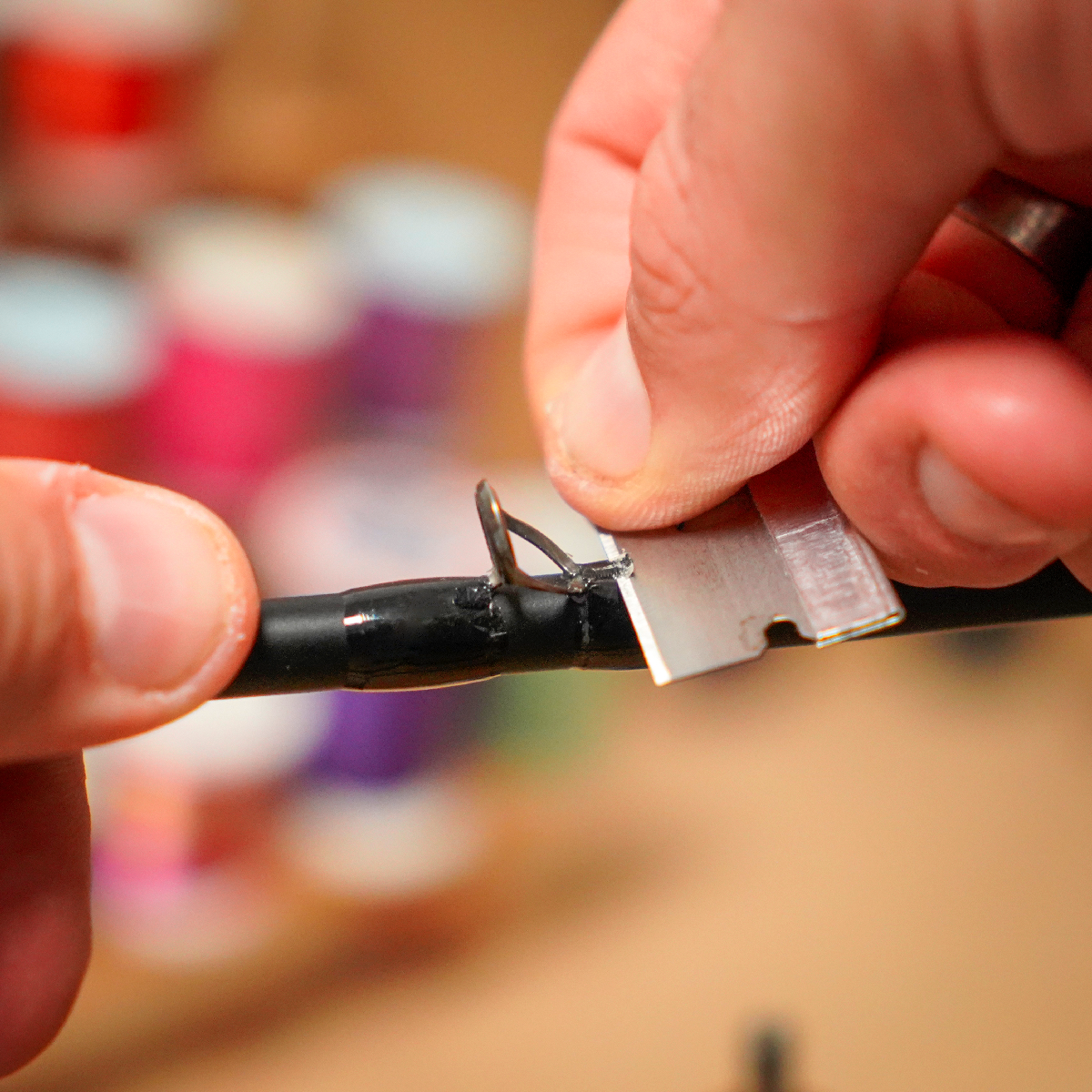
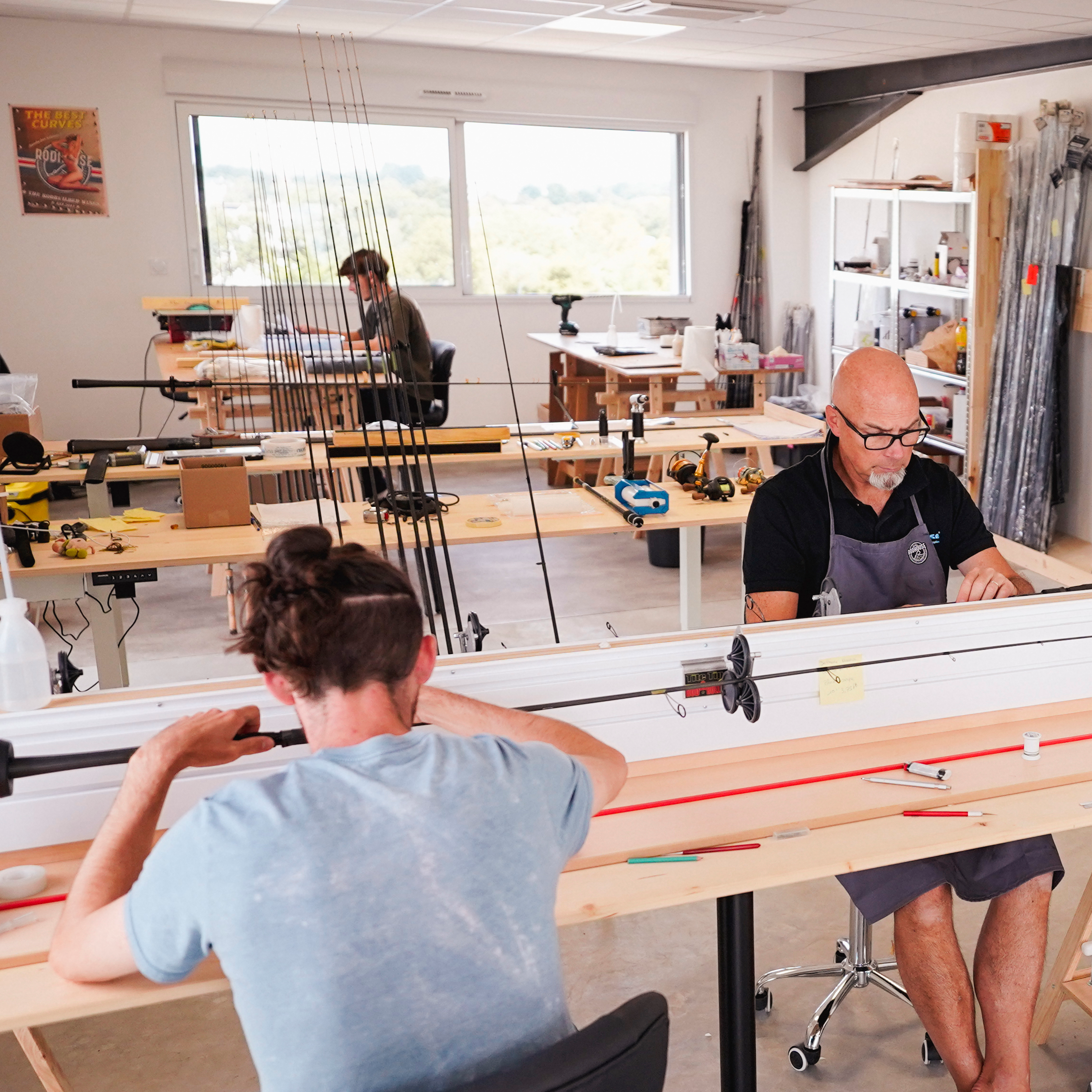
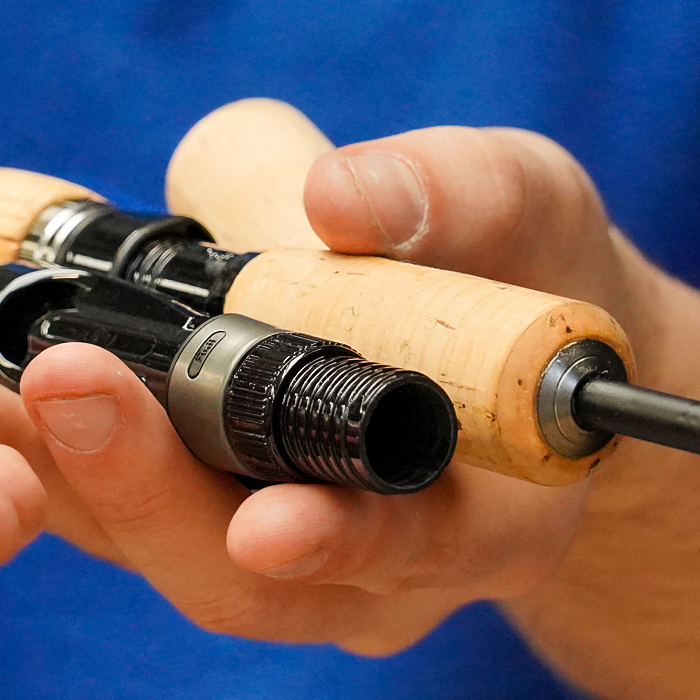
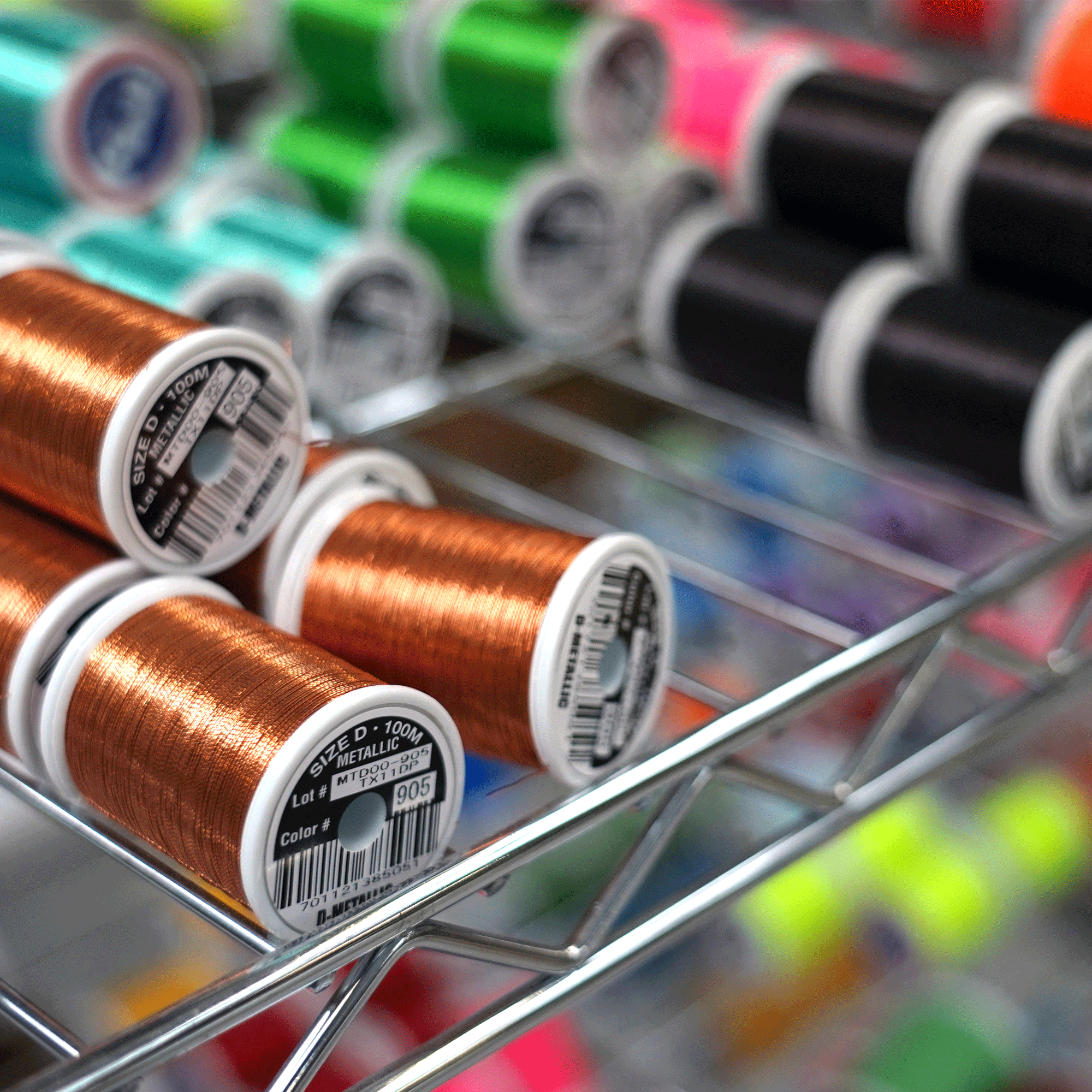
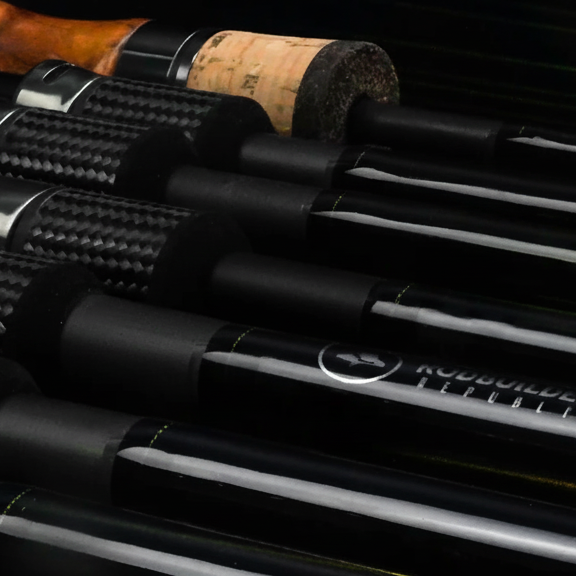
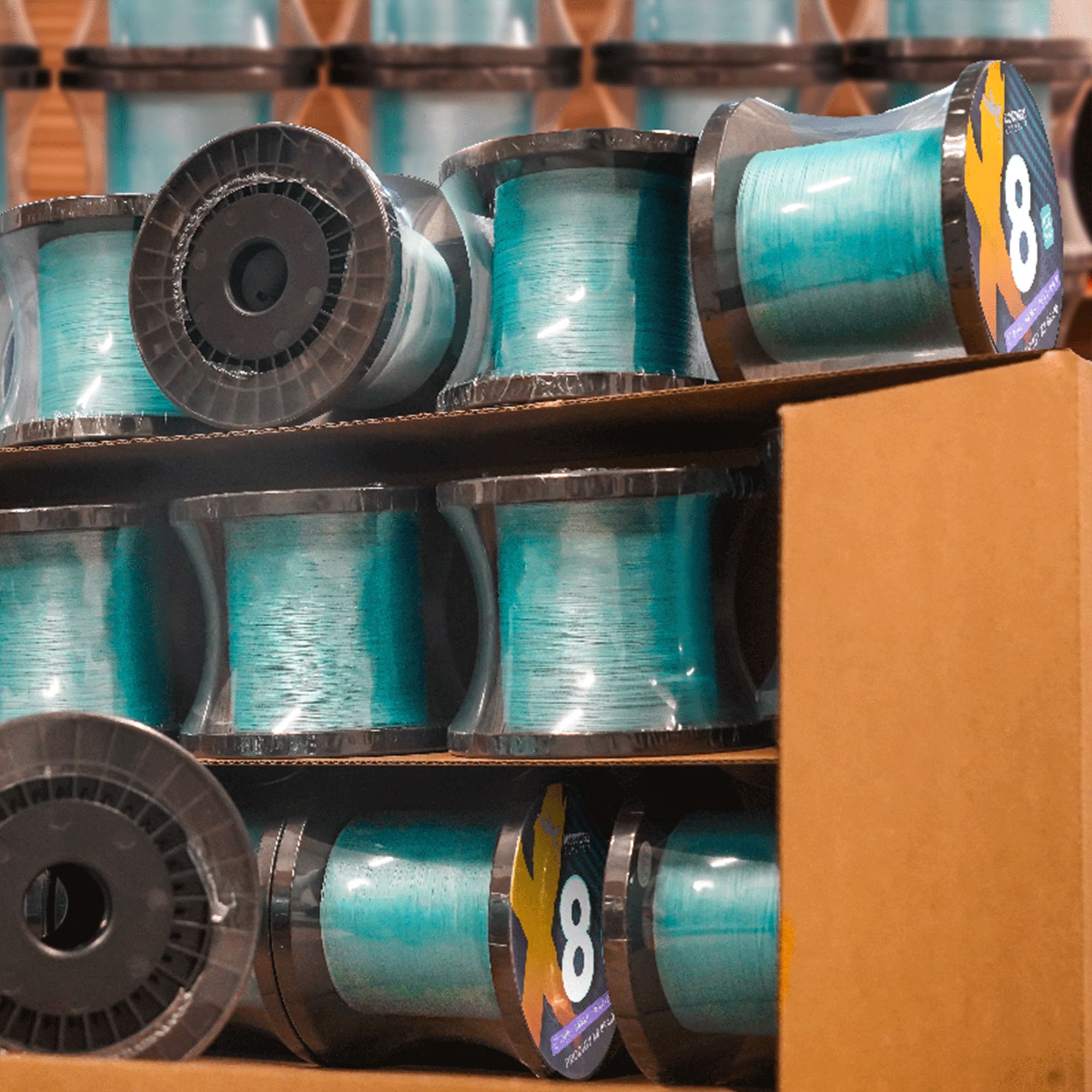
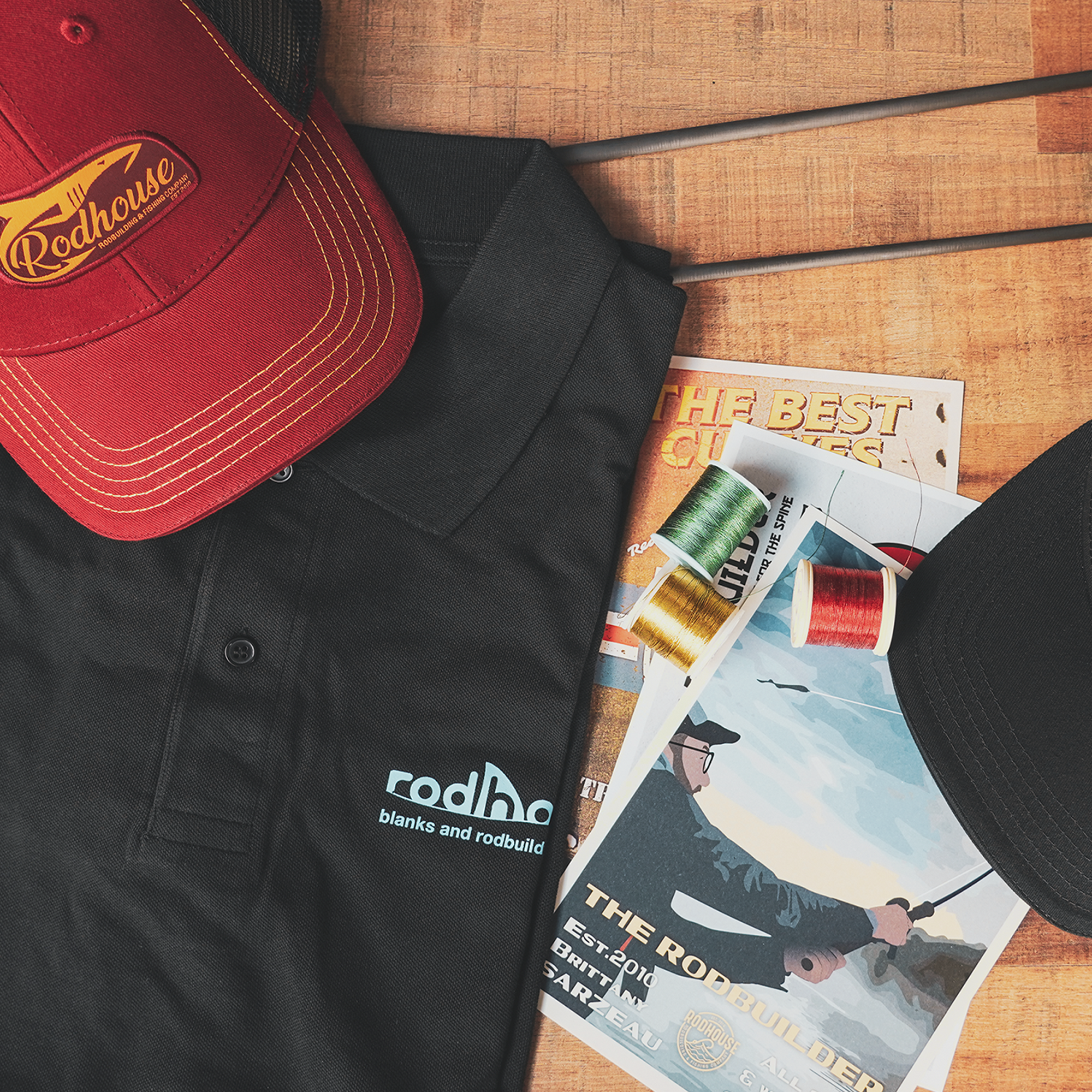
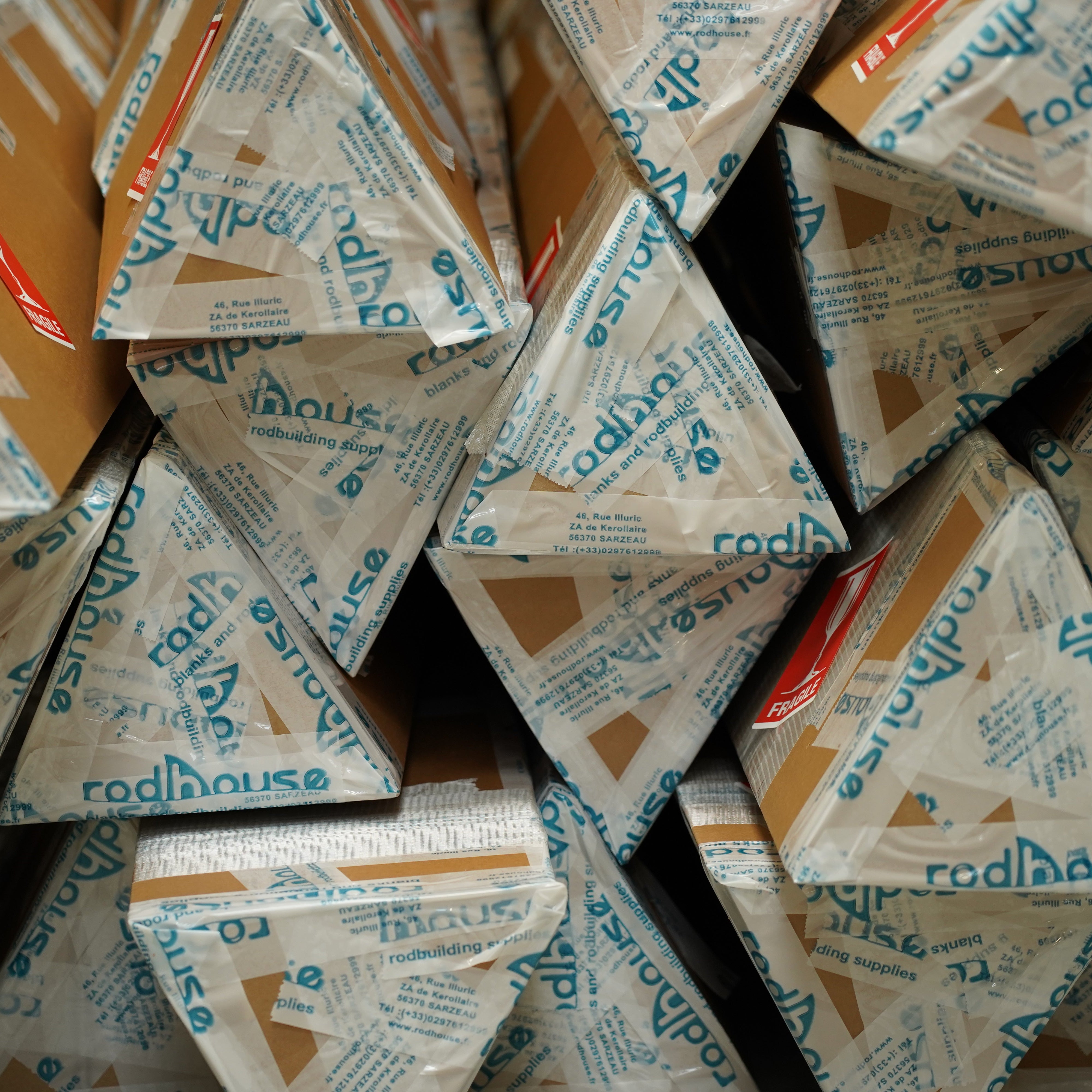
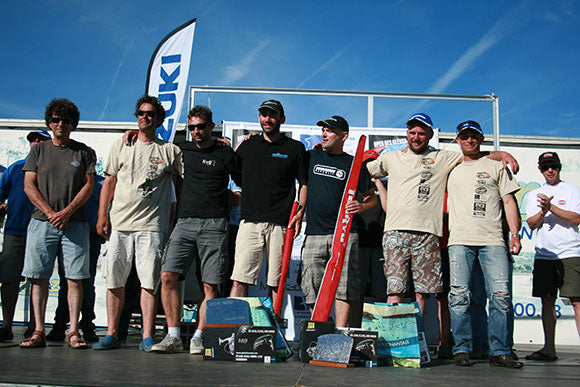
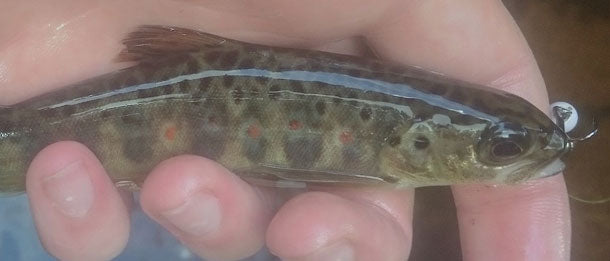
Leave a comment
All comments are moderated before being published.
This site is protected by hCaptcha and the hCaptcha Privacy Policy and Terms of Service apply.